Wizard’s Brew!
Create a foaming volcano that spews out in whatever color you choose… read on to learn more.
By Rapha Lee and Marina Muñoz Ledo
Being able to explore and figure out a situation on your own—as a kid—can make that activity even more fun. I (Marina) remember doing science activities as a kid, and the fact that there was no parent controlling my every move made me feel more comfortable exploring. I learned to experiment; to try out new ways of doing things. Without the fear of arriving at the wrong conclusion, or of messing up along the way, I built a healthy relationship with science. Instead of a subject that I am forced to do, science has been a source of curiosity, investigation and discovery. At a young age I was able to develop essential skills that I have relied on through my primary, middle and high school science courses. Most important of all, I learned to build my own opinions based on observations.
Conducting fun scientific experiments with your kid is a great way to cultivate curiosity for science and improve observational and inferential skills. It’s all about letting your kid learn and explore in a hands-on, interactive way. Be sure to give your child room to make mistakes and solve them on their own. I (Rapha) went to a preschool where the philosophy was to allow kids to figure everything out on their own. The children, including me, learned how to deal with situations that we wouldn’t have been able to get through as smoothly had the parents swooped in every time we had trouble. Applying this philosophy to science as well will prepare kids to tackle hands-on experiments and deal with their messes quicker and better than they would had their parents carried them through it.
Keeping this in mind, we urge you to give scientific exploration a try. We have included our favorite experiment, Wizard’s Brew, along with a list of other kid-friendly activities below.
Wizard’s Brew -
Ingredients: baking soda, liquid watercolors and/or food coloring (recommended), glitter (optional), dish soap, vinegar, glass jar, a small plastic container, a tray.
Instructions:
Fill the glass jar halfway with vinegar, then add a few drops of your choice of color watercolor/food coloring.
Squeeze in some dish soap, stir, and place the jar on a tray.
Now have your child add in a heaping teaspoon of baking soda, stir again, and watch the foaming begin! (The soap makes it foam rather than fizz.)
To keep the reaction going continue adding baking soda and vinegar when the foam starts to slow.
To make it change colors, add a tablespoon of vinegar mixed with one color of liquid watercolor/food coloring every so often.
Celery Food Coloring Experiment - Learn how plants absorb water https://www.teaching-tiny-tots.com/toddler-science-celery-experiment.html
Dancing Worms - Make gummy worms dance!
https://www.primroseschools.com/blog/science-fun-dancing-gummy-worms/
Rainbow Milk - Explore the world of color with rainbow milk
https://artfulparent.com/awesome-rainbow-milk-science-experiment/


